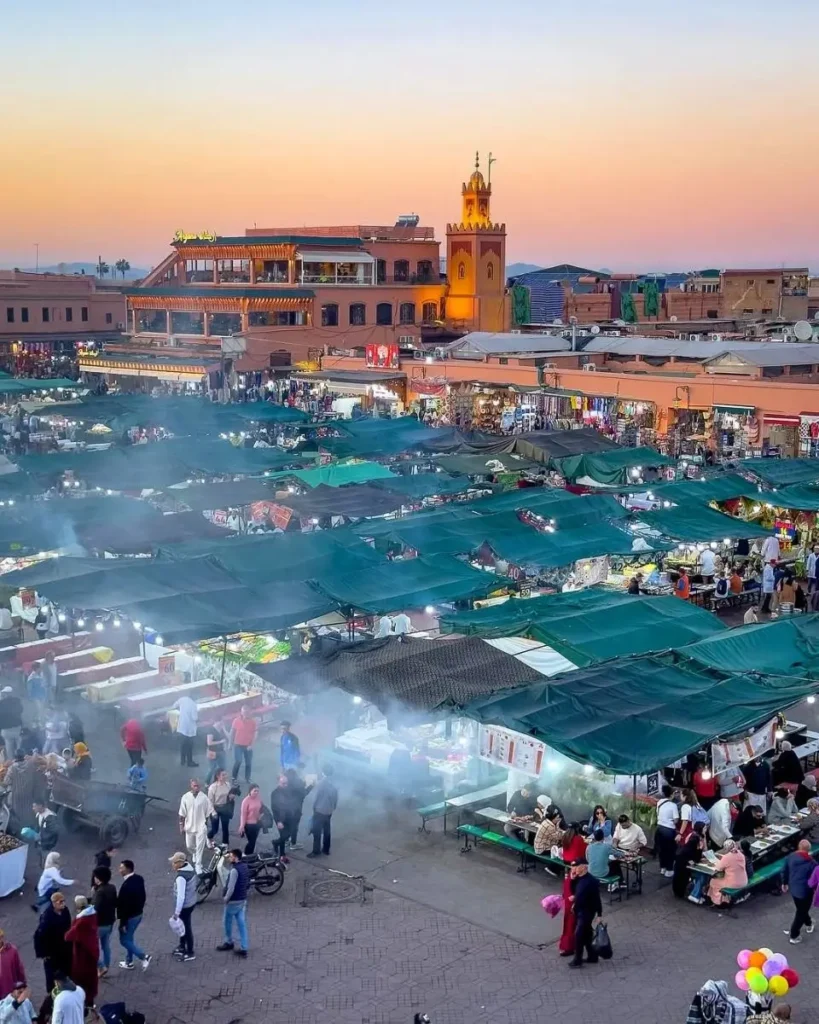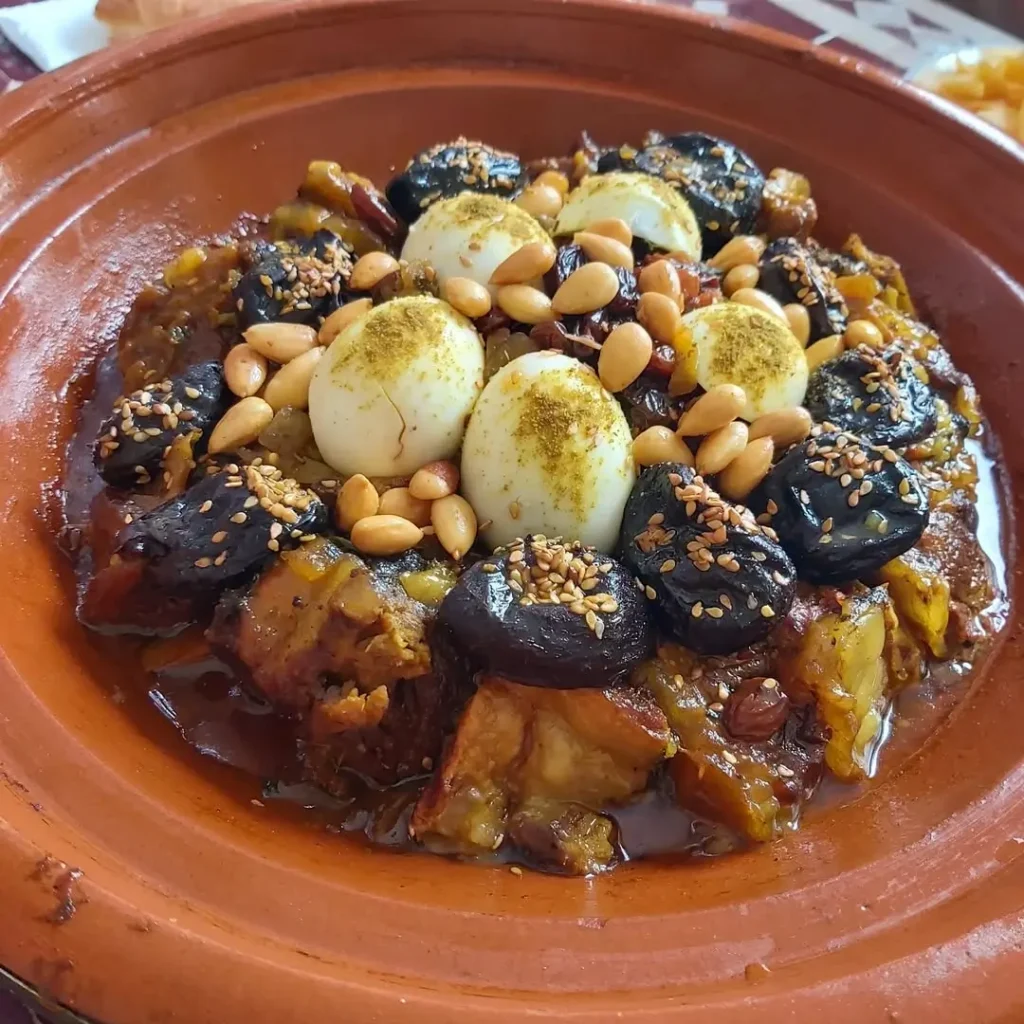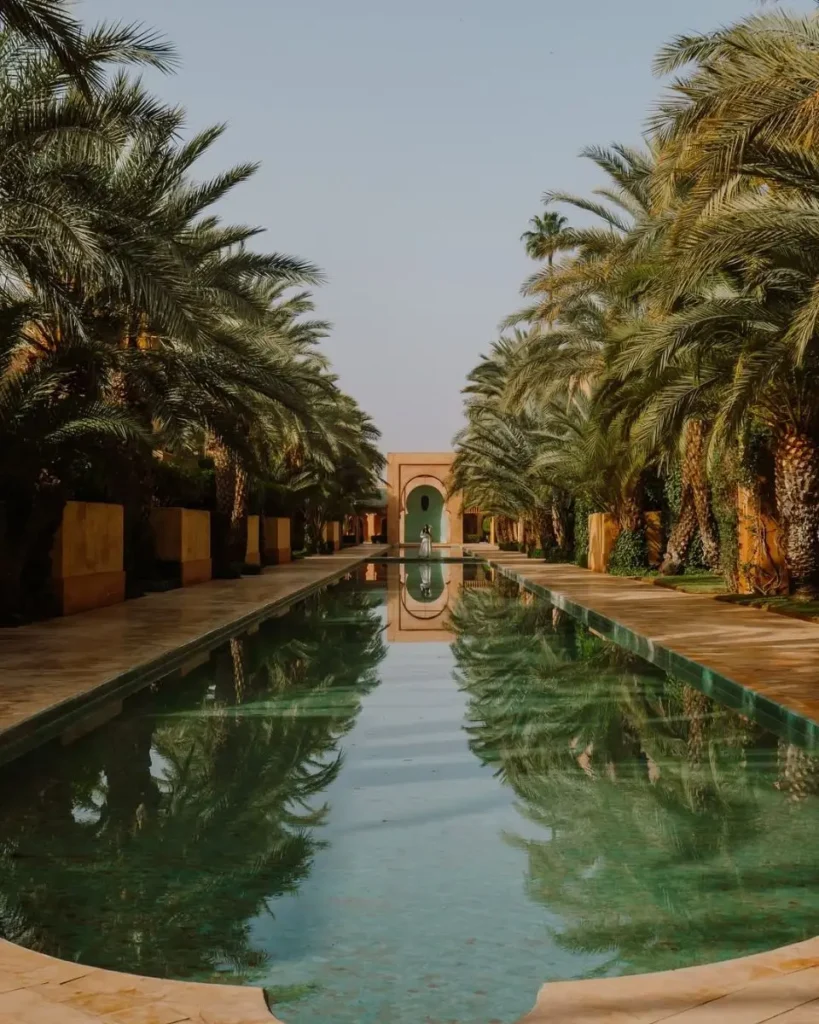Table of Contents
Oh, Marrakech! It’s a city that just grabs you with its incredible history, those buzzing souks you’ve heard so much about, gorgeous gardens, and architecture that’ll have your jaw dropping. Seriously, it’s a feast for every sense – the amazing smell of spices in the air, the calls of vendors, it’s all part of the charm. This Marrakech itinerary is your golden ticket, packed with all my top tips to explore the city’s best bits, from famous landmarks to those little hidden corners that make a trip truly special. We’re talking cultural deep dives and experiences you won’t forget.
How Many Days Do You Need in Marrakech? Finding Your Perfect Pace
So, how long should you plan for your Marrakech itinerary? I reckon three days is the sweet spot. It gives you just enough time to see the main highlights, get a real feel for the city, and maybe even sneak in a day trip without feeling like you’re constantly rushing. It’s a great mix of culture, sightseeing, and a little adventure.
If you’re super tight on time, say one or two days, you’ll want to focus on the Medina, get lost in the Souks, experience Jemaa el-Fnaa, and perhaps visit a stunning palace like Bahia.
Got a bit longer, like four days or even a whole week? Fantastic! You can explore more museums, discover even more tranquil gardens, and take a few different day trips to see what’s beyond the city walls. More time means more tagines, right?
Planning Your Visit: Essential Pre-Trip Information
A little bit of planning goes a long way, especially for a trip to Marrakech. Knowing a few key things before you go can make your adventure so much smoother.
When is the Best Time to Visit Marrakech (2025)?
Thinking about the best time for your Marrakech itinerary? I’d aim for the shoulder seasons. That’s mid-March to late May, or the end of September to mid-November. The weather then is just lovely – pleasantly warm, perfect for wandering around without melting or shivering.
Do keep in mind that these are popular times, so it might be a bit busier and prices can be a tad higher. Booking some things in advance isn’t a bad idea.
Now, summer (June to August)? Phew, I’d try to avoid it if you can. It gets incredibly hot, like 45-50°C hot! Exploring during the day can be a real struggle, and not everywhere has amazing air-con. Evenings are lively, though! If you do go in summer, drink loads of water, wear a hat and sunscreen, and stick to light, covering clothes. Early morning adventures or chilling by the pool during the heat of the day are your best friends. Essaouira on the coast is a great cooler escape then too.
Winter (December to February) can be a good shout for fewer crowds and better deals. Daytime temperatures are mild, usually around 15-20°C, which is great for exploring. But, and it’s a big but, it gets pretty chilly at night, sometimes dropping to 4°C. So, pack layers and check if your riad has heating. The pools might be too cold for a dip then too. Christmas and New Year’s can get busy and pricey, just so you know.
Also, keep an eye on when Ramadan falls (it shifts each year, around Feb-Mar in 2025/2026). The city might be a bit quieter during the day as people fast, but it comes alive after Iftar (when they break the fast). Most places stay open, but it’s good to be considerate if you’re eating or drinking in public during daylight hours.
Getting Around Marrakech: Navigating the Red City
Exploring the Medina is best done on foot. Honestly, it’s a car-free zone, and wandering through its narrow, winding alleyways is all part of the fun. You will get lost, I guarantee it, but that’s often when you stumble upon the most amazing little spots! Locals are usually happy to point you in the right direction, but just be aware of anyone being overly keen to “guide” you – they might expect a tip or lead you to a shop. Oh, and keep an ear out for motorbikes and bicycles whizzing by!
For trips a bit further afield within the city, petit taxis are your go-to. Always, always insist the meter is on (it’s the law!) or agree on a price before you set off. Fares are usually pretty reasonable, around 30-50 MAD. Grand taxis are for longer journeys, like to the airport or other cities. Your hotel or riad can usually call a reputable taxi for you and give you an idea of the fare. Pre-booking an airport transfer is a super good idea for a stress-free arrival.
And for a bit of traditional charm, why not try a horse-drawn carriage? It’s a lovely way to see some parts of the city, a real classic experience for any Marrakech itinerary.
Staying connected is pretty handy for maps and looking things up. Grabbing a local SIM card at the airport (something like 20GB for €20) is often much better value than an eSIM if you need constant data.
Where to Stay in Marrakech: Embracing Moroccan Hospitality
For a truly authentic Marrakech experience, I can’t recommend staying in a Riad in the Medina enough. These are traditional Moroccan houses, with rooms built around a beautiful central courtyard. Many have rooftop terraces (perfect for breakfast or watching the sunset) and some even have little plunge pools. They’re like peaceful oases away from the hustle and bustle of the city. Plus, being in the Medina means you’re right in the heart of things, close to the souks and Jemaa el-Fnaa.
There are riads for every budget!
For budget-friendly stays, you could check out places like Riad Sijane or Hostel Kech Vibe.
Mid-range options like Riad L’Etoile D’Orient or Riad Nirvana offer lovely comfort.
If you’re looking to splash out a bit, Riad Ekla Boutique Hotel or Indian Palace are gorgeous.
And for ultimate luxury, The Royal Mansour or The Oberoi Marrakech are dreams.
If you prefer something a bit more modern, the areas of Hivernage and Gueliz, outside the Medina, have upscale hotels, trendy cafes, and contemporary art galleries. You’re still close to the action but it’s a bit less hectic. Hotels like Swiss Continental Hotel could be good options there.
Your Perfect 3-Day Marrakech Itinerary
Alright, this 3-day Marrakech itinerary is perfect if it’s your first time in the city. It’s a great mix of culture, seeing the big sights, and getting a real taste of local life.
Day 1: Medina Immersion & Souk Sensory Overload
It’s best to start your day bright and early!
Morning:
First up, head to the Koutoubia Mosque & Gardens. Take a peaceful stroll through Jemaa el-Fnaa on your way. It’s the largest and most famous mosque in Marrakech. While you can’t go inside if you’re not Muslim, the outside is stunning, and the gardens are lovely for a wander. Sunset here is pretty magical too. Plan for about an hour.
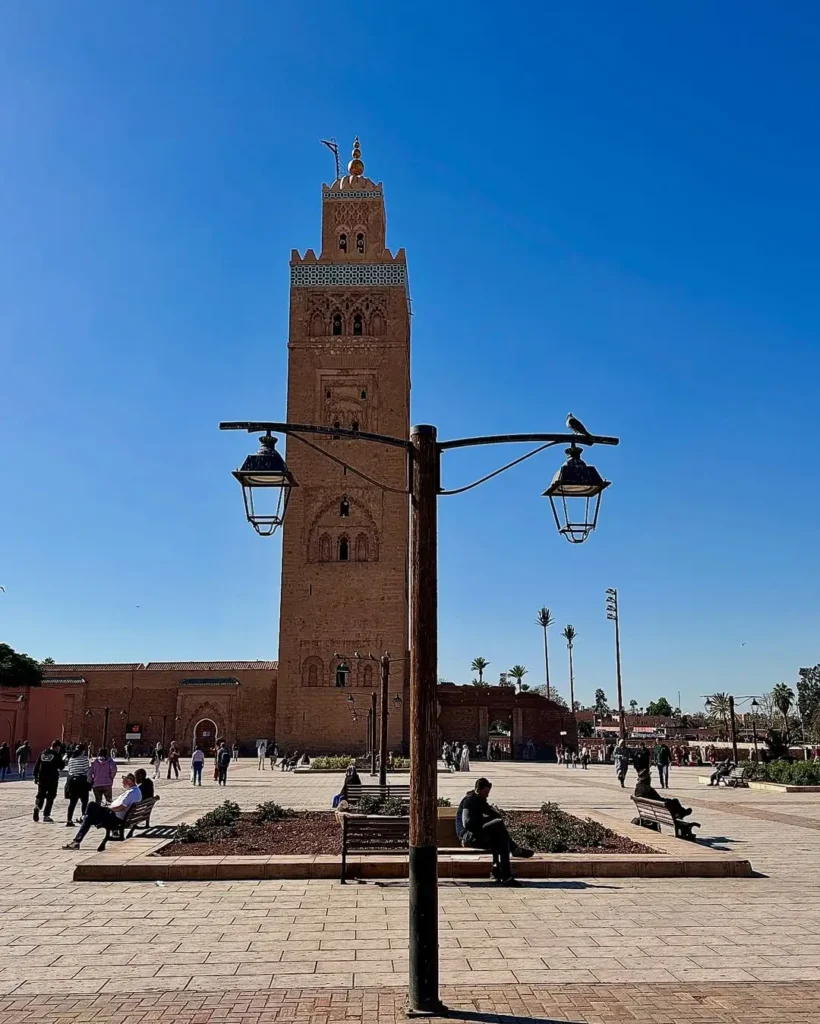
Late Morning/Afternoon:
Now, brace yourself for the Souks! This is one of the essential things to do in Marrakech. Dive into the vibrant heart of the city. Yes, you’ll probably get a bit lost in the maze of alleyways, but honestly, that’s all part of the adventure and where you find the best treasures. There are so many key souks to explore: Souk Semmarine is the main drag, Souk El Attarine is all about spices and perfumes, Souk Smata for traditional slippers (babouches), Souk Cherratine for leather goods, Souk Zrabi for beautiful carpets, Souk Haddadine where the blacksmiths work their magic, and Souk Chouari for woodcrafts. Allow a good 2-3 hours, or more if you love to shop!
A few shopping tips for your Marrakech itinerary: Haggling is totally expected, it’s like a friendly game. Start by offering around 30% of the first price they give you, have a maximum price in mind, and don’t be afraid to politely walk away if the price isn’t right. Keep it light-hearted and respectful! Fun fact: some believe the first sale of the day brings good luck, so you might get a better deal if you shop early (around 9-10 AM). Most vendors only take cash (Moroccan Dirhams, MAD), and smaller notes are always appreciated. It’s a good idea to browse a bit first to get a feel for prices before you start buying. And yes, some sellers can be quite persistent – a polite but firm “No, thank you” (La, shukran) usually does the trick.
Don’t miss Raba Kedima Square, a slightly quieter, hidden gem within the souks. It’s great for unique finds and just watching the world go by. Plan for about an hour here. For lunch, Café Des Épices in Raba Kedima Square is a popular choice, or find another spot nearby.
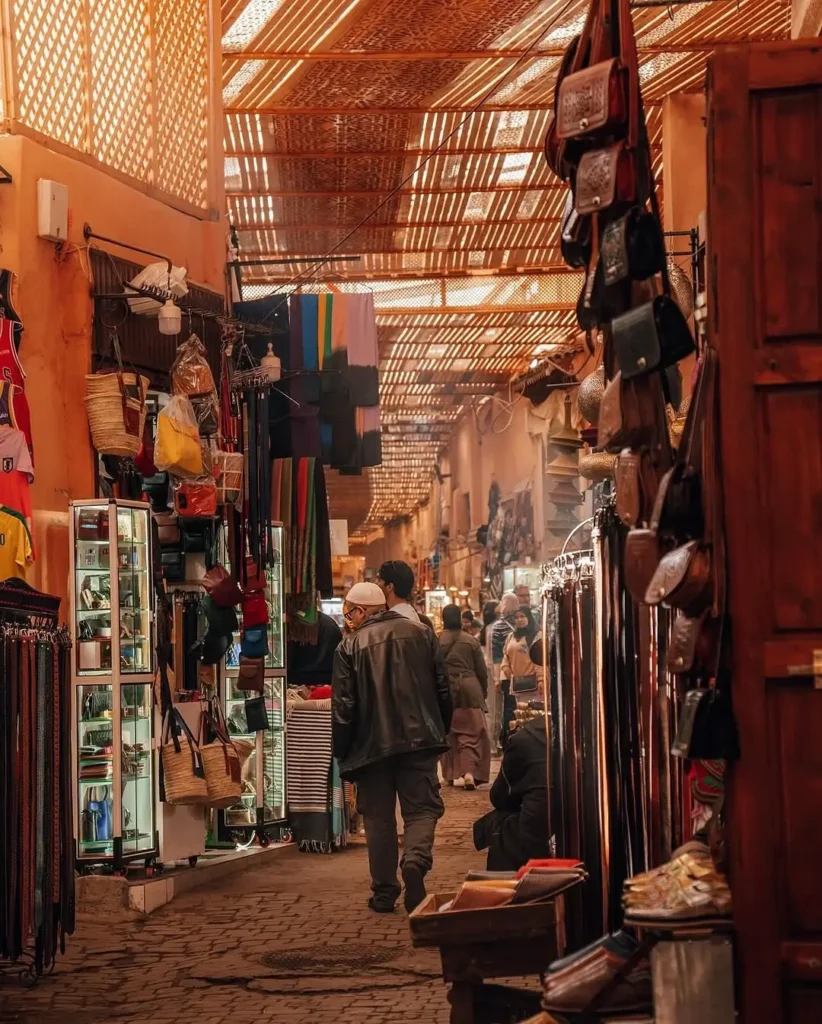
Late Afternoon:
Time to explore Bahia Palace. This 19th-century palace is absolutely beautiful, showcasing incredible Moroccan architecture, stunning painted ceilings, and tiled courtyards. It’s a real feast for the eyes. Try to visit in the late afternoon when it’s often less crowded. A guided tour can really bring its history to life. Allow about 2 hours here.
Evening:
As evening falls, Jemaa el-Fnaa transforms! It’s an unmissable experience. The square buzzes with energy – street performers, snake charmers (though do be mindful of the ethics here), drummers, storytellers, and tons of sizzling street food stalls. It’s pure theatre!
For dinner, you could grab a quick and tasty bite from one of the food stalls – it’s an adventure in itself! Or, for a more guided experience, consider a Marrakech Street Food Tour with a local. To soak it all in, head to a rooftop restaurant or bar overlooking the square, like Le Grand Balcon de Café Glacier or NOMAD. It’s perfect for people-watching.
Day 2: Architectural Wonders & Tranquil Gardens
Another early start is recommended today to beat the crowds for some of these [Marrakech attractions].
Morning:
First on the list is Ben Youssef Madrasa. This place is breathtaking. It was once the largest Islamic school in North Africa and is now a UNESCO site. The intricate tilework, carved wood, and sculpted plaster are just incredible. Try to get there right when it opens at 9 AM for a more peaceful visit. Don’t forget to explore the old student rooms upstairs! Allow about 2 hours.
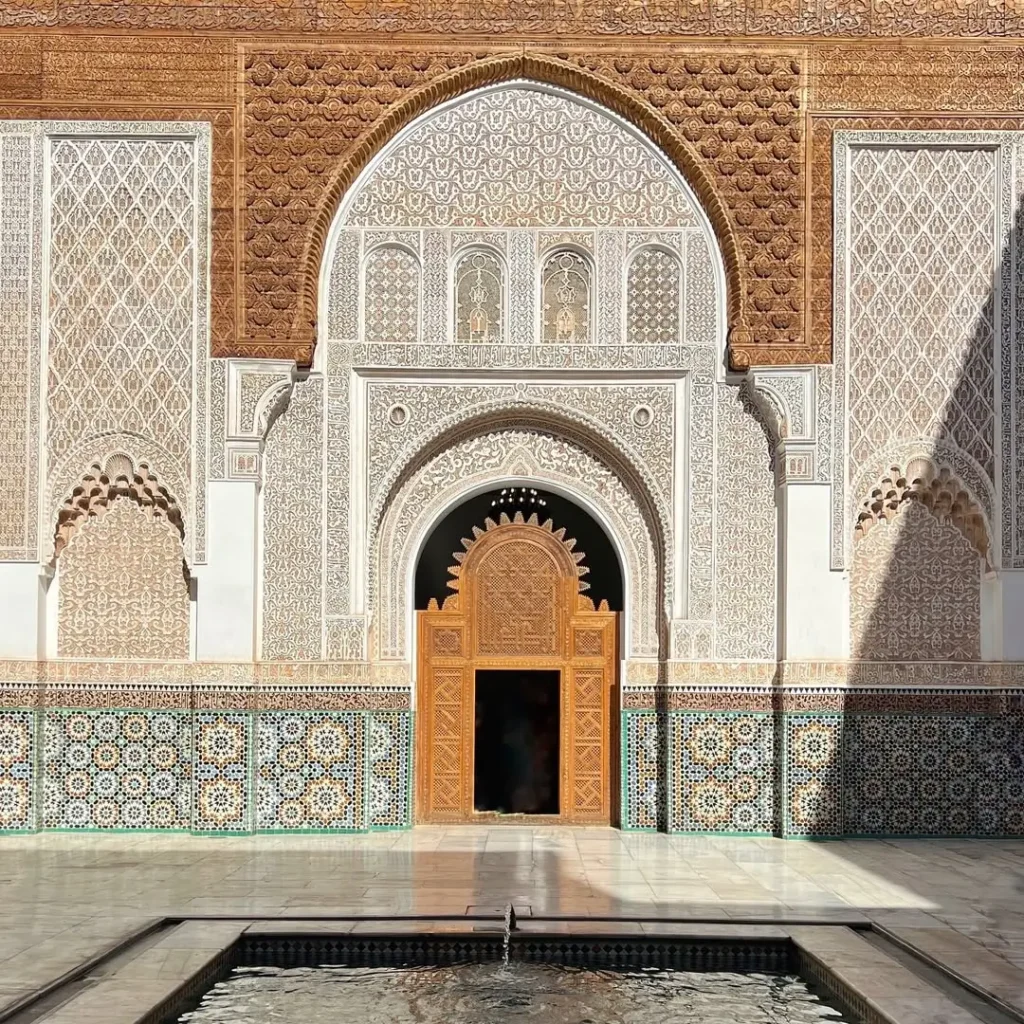
Late Morning:
Next, wander over to El Badi Palace. This vast 16th-century palace is mostly in ruins, but it’s still incredibly impressive with its towering walls and large reflective pools. You’ll often see storks nesting on the ramparts! Climb to the top for some amazing views over Marrakech. Give it about 2 hours.
For lunch, Mazel Café or other spots in Tinsmiths Square, just outside El Badi Palace, are good options.
Afternoon:
Time to explore The Kasbah District. This area, also known as the Jewish Quarter (Mellah), is a bit more peaceful than the main medina. It’s lovely to wander through its quieter streets, browse local shops, and see the Kasbah Mosque. About an hour here is good.
Then, discover the Saadian Tombs, a real hidden gem. Tucked away from the busy streets, these beautifully ornate tombs of the Saadian dynasty are stunning, with incredible tilework and peaceful gardens. You’ll only need about 30 minutes here, but it’s well worth it. This is a must-see Marrakech spot.
Late Afternoon (Choose ONE): Gardens of Serenity
You’ve got a choice of beautiful gardens for the late afternoon.
Option 1: Le Jardin Secret. This is a beautifully restored traditional Islamic and Moroccan garden right in the heart of the medina. It’s full of lush greenery and tranquil water features, and often feels a bit quieter and more intimate than Majorelle. About 30 minutes here.
Option 2: Jardin Majorelle. Probably the most famous garden in Morocco, known for its iconic cobalt-blue structures and collection of exotic plants. You’ll definitely need to book tickets in advance with a timed entry slot as it gets very busy. Some find it a bit overhyped and crowded, but it’s undeniably an iconic Marrakech spot. Allow about an hour.
Evening:
For dinner, NOMAD is a fantastic choice (book ahead!). Other great spots include L’mida Marrakech or Mechoui Alley for something traditional. If you’re feeling dessert, Pâtisserie des Princes is famous for its amazing ice cream. Then, maybe a nightcap at a rooftop bar or another wander through Jemaa el-Fnaa to soak up the atmosphere.
Day 3: Desert & Mountains Day Trip
Today, it’s time to escape the city and see some of the incredible landscapes surrounding Marrakech! A full day trip to see an argan co-operative, the Agafay Desert, and the High Atlas Mountains is highly recommended. Booking a guided tour makes this super easy and you learn so much more.
Your day might look something like this:
First, a visit to an Argan Co-operative. Here, you can learn all about how traditional argan oil is produced by local women. It’s fascinating, and you’ll get to sample and buy high-quality products if you wish.
Then, onto the Agafay Desert. It’s a rocky desert, not sandy dunes like the Sahara, but it’s only about an hour south of Marrakech and stunning in its own right. Many tours include a short 15-minute camel ride here – pop on some traditional clothing for some fun photos!
Next, you’ll head into the High Atlas Mountains. The scenic drive to Imlil, a mountain town at the foot of Mount Toubkal (North Africa’s highest peak!), is beautiful. Enjoy a slow, easy 1-hour hike through shaded forests and local Berber villages, getting a glimpse into traditional life.
To top it all off, you’ll usually enjoy a traditional home-cooked meal at a local Berber home in Imlil. People often say this is one of the best meals they have in Morocco – a hearty 3-course tagine or couscous feast! This whole day is a fantastic part of any Marrakech itinerary.
Extending Your Stay: Beyond the 3-Day Itinerary
If you’ve got more than 3 days in Marrakech, brilliant! There’s plenty more to see and do, both in the city and further afield.
Additional Marrakech Sights
There are some wonderful museums and cultural sites to explore. Dar Al Bacha, with its stunning coffee shop and informative museum, is a treat. The Maison de la Photographie has a great collection of vintage Moroccan photos and a lovely rooftop cafe. The Musée Yves Saint Laurent, next to Jardin Majorelle, celebrates the iconic designer. Musée des Confluences (Dar el Bacha Palace) offers insights into Moroccan history. Foodies will love the Moroccan Culinary Arts Museum, and perfume enthusiasts can explore Musée du Parfum. The Heritage Museum is a small but well-curated spot for traditional artifacts.
For more green spaces, ANIMA André Heller Garden is a whimsical artistic escape, and Cactus Thiemann, the world’s largest cactus farm, offers a unique, peaceful visit.
Don’t forget to explore Gueliz & Hivernage for a taste of modern Marrakech, or wander along the ancient Marrakech Ramparts and see impressive gates like Bab Agnaou.
Recommended Day Trips from Marrakech
Essaouira, a chilled-out coastal town, is a popular day trip. It’s got a walled medina, cooler breezes, and fantastic seafood.
The Ouzoud Waterfalls are another great option, with guided hikes to these picturesque falls.
For a different desert experience, an Agafay Desert Dinner tour offers a camel ride, a stunning sunset, and dinner with entertainment in a traditional camp.
History buffs will love a trip to Ouarzazate & Aït Benhaddou, crossing the High Atlas to see film studios and the incredible UNESCO ksar.
And of course, there are many different tours that offer deeper exploration of the Atlas Mountains, its valleys, and Berber villages.
Multi-Day Tours from Marrakech
If you really want an unforgettable desert adventure, a Sahara Desert Tour (like a 3-Day Merzouga Safari) is incredible. Camel treks, sleeping under the stars in a Bedouin camp – it’s a must-do for many. These tours often include stops in the Atlas Mountains, Ouarzazate, and the Todra Gorges.
Essential Travel Tips for Your Marrakech Adventure
A few Marrakech travel tips can make your trip even better. It’s all about being prepared and respectful.
Safety & Solo Female Travel in Marrakech
So, is Marrakech safe? Generally, yes. Violent crime is low. However, like any big city, you need to be aware, especially of petty crime and street harassment, which can be common.
For women, street harassment is unfortunately something you might experience, but it rarely escalates to anything physical. Dressing modestly (loose clothes covering shoulders and knees) helps you blend in. Avoiding direct eye contact can sometimes deter unwanted attention, and wearing headphones (even with no music) can signal you’re not looking to chat. A firm “No” or “Hshouma” (which means “shame on you”) can be effective if someone is persistent. Most importantly, trust your gut. If a situation feels off, leave.
Be aware of common scams. Decline unsolicited “guides” – they often expect big tips or will lead you to shops where they get commission. Always insist on the meter in taxis or agree on a price beforehand. Street performers or henna artists might demand payment for photos or services you didn’t ask for; a firm decline is usually enough.
Petty crime like pickpocketing can happen in crowded areas. Use a cross-body bag with a zip, keep valuables secure, and don’t flash expensive items. It’s also about learning to distinguish between genuine danger and cultural differences that might just feel a bit uncomfortable, like people staring or persistent shopkeepers.
Health & Wellness Tips
Stay hydrated! Drink bottled water only, and be a bit wary of ice, especially in the summer. Sun protection is key – high SPF sunscreen, sunglasses, and a wide-brimmed hat are your friends. Try to seek shade during the hottest part of the day (11 AM – 3 PM).
When it comes to food, choose busy street food stalls where the turnover is high. Be cautious with raw or undercooked meats and unpeeled fruits unless you’re at a reputable restaurant. Carrying hand sanitizer is always a good idea. And watch out for traffic! Roads can be hectic, and scooters and bikes in the Medina can appear out of nowhere.
Cultural Etiquette & Communication
Dressing respectfully is important. Cover your shoulders and knees, especially if you’re visiting religious sites or wandering through more conservative areas. Loose, breathable clothing is best for the heat anyway.
Haggling, as I mentioned, is part of the culture. Think of it as a friendly exchange rather than a battle. Engage with a bit of humor and respect. Always ask permission before taking photos of people, especially close-ups of vendors. Some might expect a small tip.
Moroccan hospitality is famous. You might be offered mint tea by shopkeepers – accepting doesn’t mean you have to buy anything, it’s often just a kind gesture. Learning a few basic French or Arabic phrases like “Salam alaykum” (peace be upon you) and “Shukran” (thank you) will be really appreciated. Also, be mindful of prayer times (you’ll hear the adhan, or call to prayer); some shopkeepers might briefly step away.
Essential Preparations
Travel insurance is an absolute must – for health, cancellations, theft, everything. Carry enough Moroccan Dirhams (MAD) in small notes for markets and smaller buys. Leave super valuable items at home, and maybe keep a spare credit/debit card separate from your main wallet, just in case.
It’s a good idea to pre-book your flights and accommodation, especially if you’re set on a particular riad during peak season. Popular tours, like Jardin Majorelle, should also be booked in advance.
Conclusion: Your Unforgettable Marrakech Awaits!
Phew! Marrakech is one of those cities that truly offers an incredible mix of rich history, buzzing culture, and architecture that will just blow you away. It’s a place that keeps you on your toes, always has a surprise around the corner, and honestly, it’ll leave you wanting to come back for more.
By following this Marrakech itinerary and keeping these essential travel tips in mind, you’re all set for an absolutely unforgettable adventure. So, go on, embrace the wonderful chaos, soak up all the beauty, and let yourself get lost in the incredible soul of the Red City! You’re going to have the best time.
Frequently Asked Questions (FAQ) About Marrakech itinerary:
How many days is enough in Marrakech?
Three days is generally ideal to experience the main highlights of Marrakech comfortably.
What to do in 3 days in Marrakesh?
In 3 days, explore the Medina, souks, Jemaa el-Fnaa, key palaces like Bahia and El Badi, gardens like Jardin Majorelle, and consider a day trip to the Atlas Mountains.
Is 3 days in Marrakech too much?
No, 3 days is not too much; it’s a popular duration that allows for a good balance of sightseeing and cultural immersion without feeling rushed.
Is 7 days in Marrakech too long?
Seven days is not too long if you want to explore extensively, enjoy more day trips (like Essaouira or the Sahara), and relax at a slower pace.
